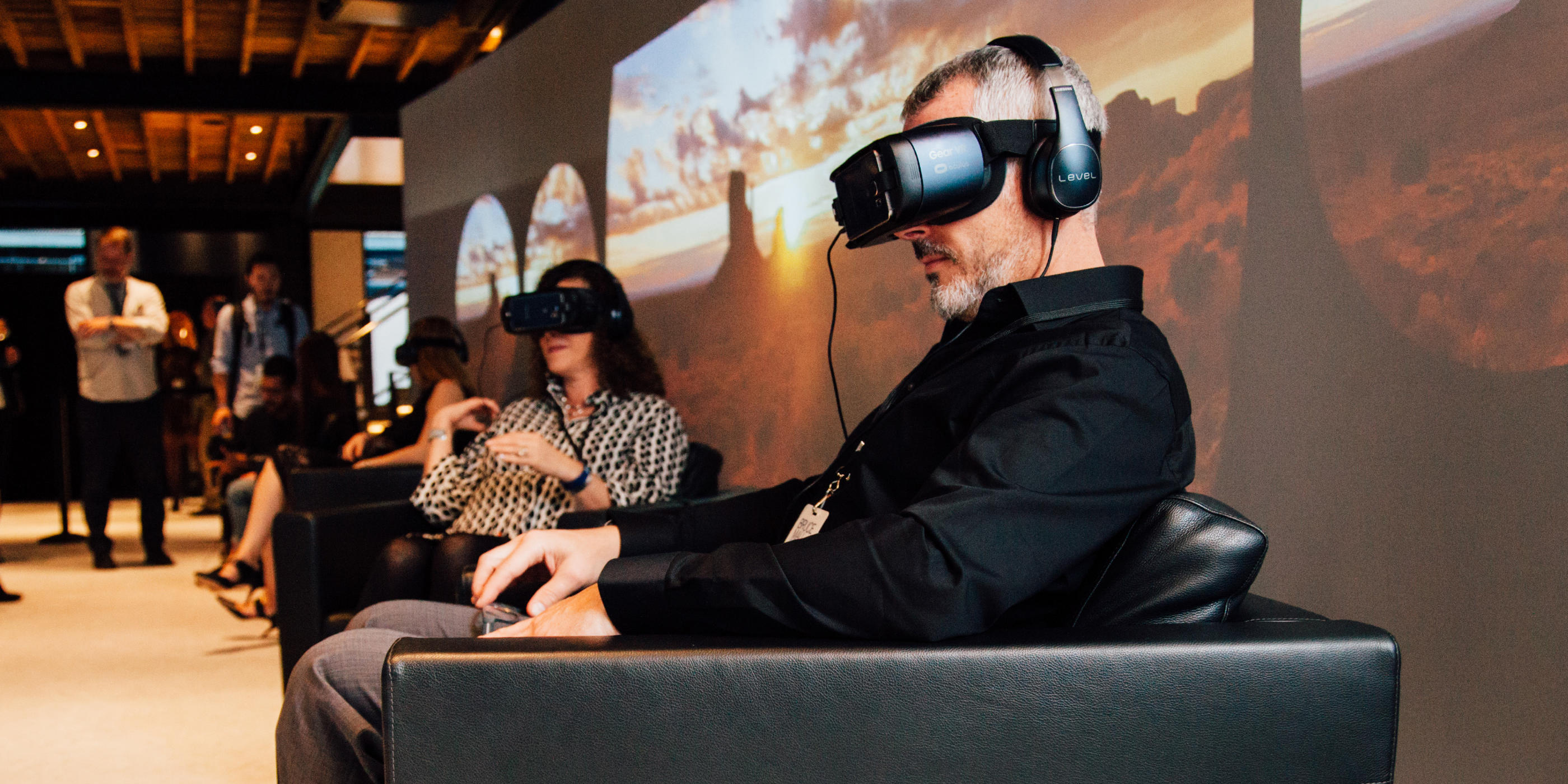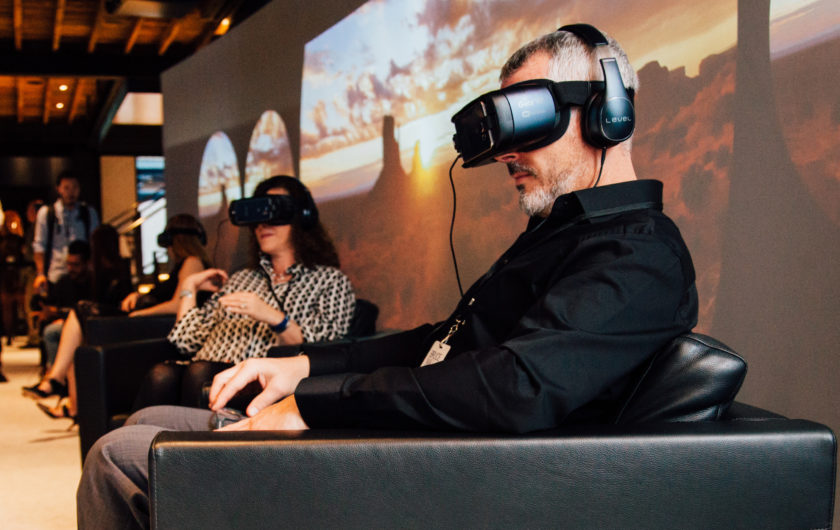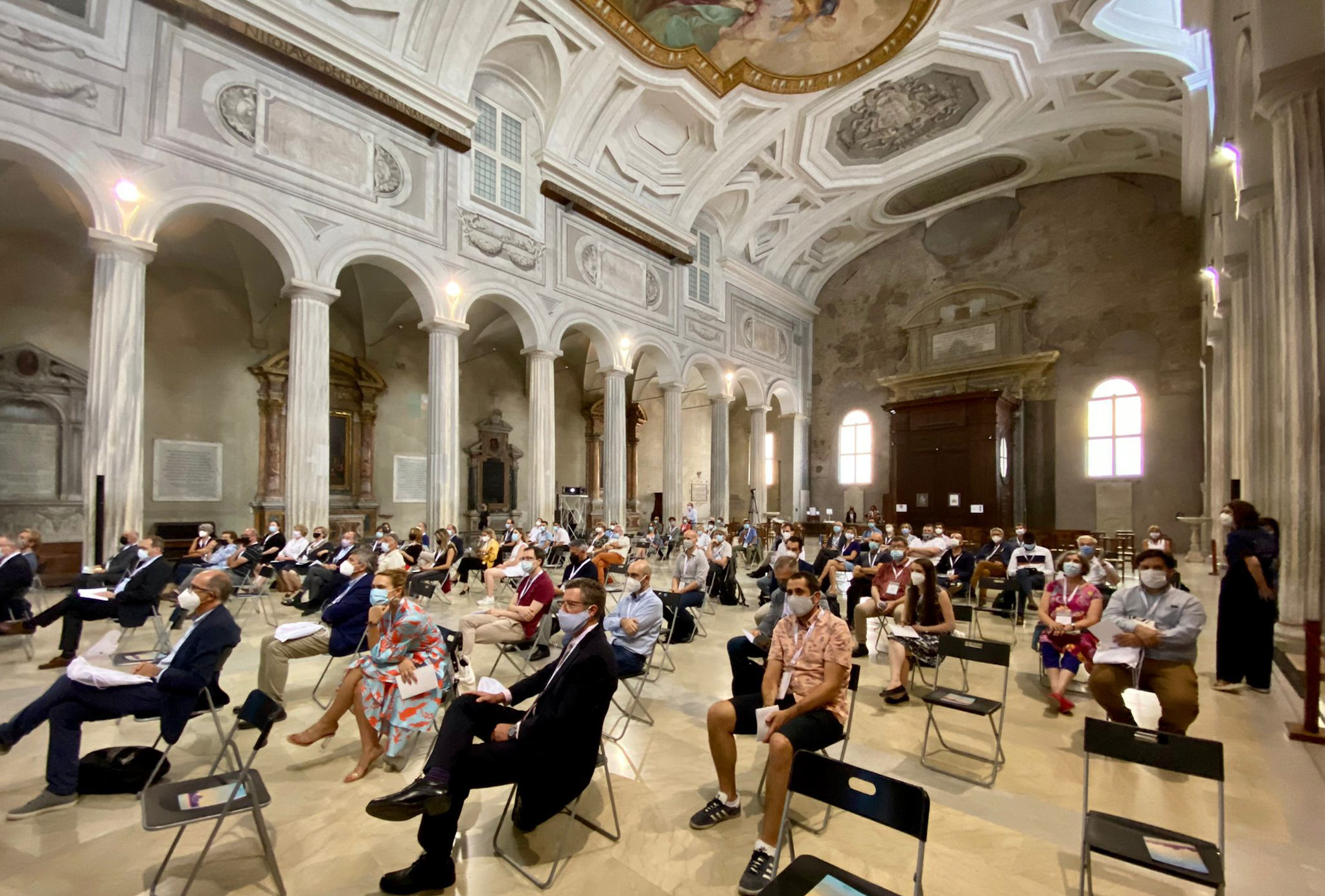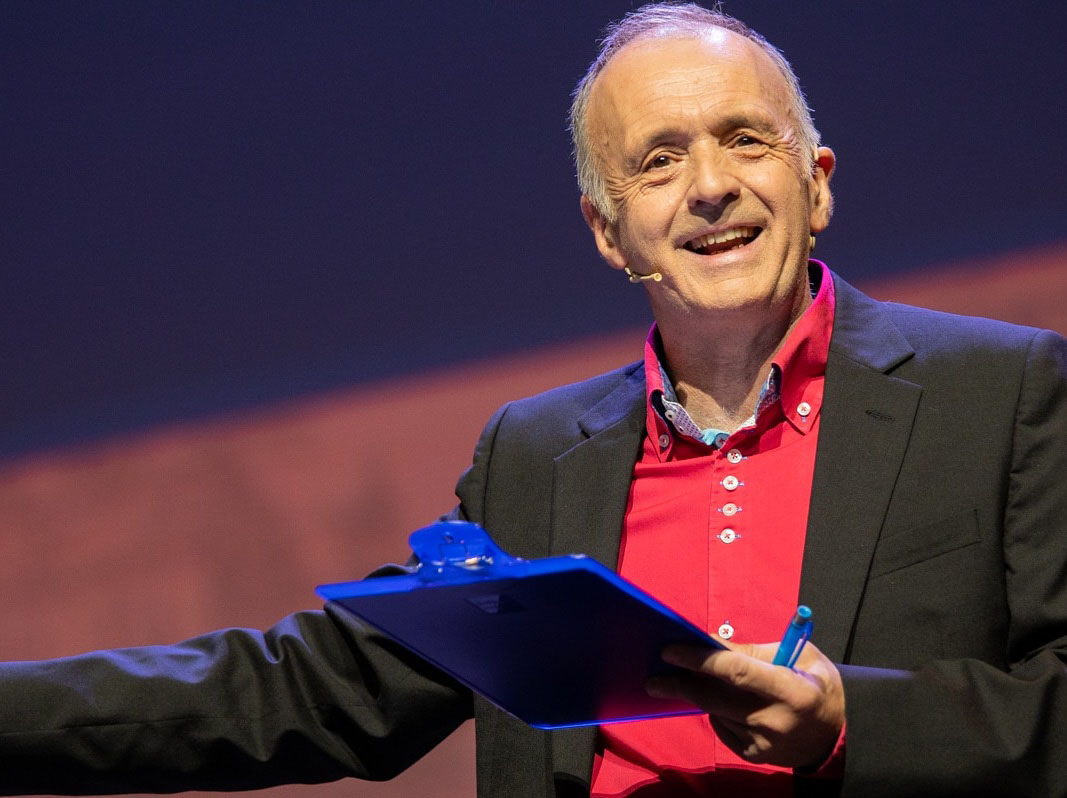
Although it’s not necessarily a new innovation, recent advancements have made virtual reality (VR) more immersive and affordable than ever before. As a result, VR is now capturing our imaginations and transforming everything from everyday experiences to industrial design processes — and smart brands are sitting up and paying attention.
What makes VR so impactful? Two reasons:
1. Immersion is no longer a buzzword, but an actuality with VR. It is a technology that must be seen to be believed.
2. It offers a highly customisable, engaging, dynamic, and powerful update to the brand experience.
Although there’s understandably some nervousness over whether VR can live up to its hype, we believe that well-executed VR has enormous potential to enhance events, build brand loyalty through immersive content, and make virtual experiences as powerful as real-life ones.
But how does it work, and where should it fit in your event strategy?
What is virtual reality?
In its most basic form, VR seeks to create the illusion of being somewhere we physically are not. Early attempts at VR, from rudimentary stereoscopic viewers to the beloved childhood View-Master toys, tried to create the illusion of depth to make the images seem real.
Modern VR plays off that concept. It uses sophisticated technology to create moving stereoscopic images, which are two images that are slightly offset from each other to mimic how the human eye sees. When the images are viewed simultaneously through a specialised headset, they appear realistic and immersive because they appear to move and update in real time just like the real world.
Additionally, the user may wear specialised accessories that allow them to virtually move, manipulate objects, and explore the digital environment.
It’s important to understand that VR isn’t the same as augmented reality (AR) and mixed reality (MR), two other terms that are frequently (but erroneously) used interchangeably with VR. That said, AR and MR rely on many of the same technologies as VR, and we believe AR and MR are the next logical evolutionary steps to VR.
Why is VR so hot right now?
Although the VR concept isn’t new, the technology to power VR is.
Older technology couldn’t deliver images crisply and quickly enough, leaving users with a slightly disoriented, nauseated feeling — definitely not a desired result for most brands!
But technology has finally caught up, and today’s processors are fast enough to deliver a seamless experience for the user, one that's inexpensive enough to make mass adoption of VR feasible.
True VR creates completely immersive experiences for users. In slight contrast, AR and MR simply overlay a digital experience onto the real world. For example, the recent phenomenon Pokémon Go is the epitome of AR in action.
The great news is that with nearly limitless applications, VR offers a wealth of opportunities in almost every facet of our world, including education, tourism, gaming, design, and commerce. And because many of us already create things that never leave the web’s digital space, it’s not hard to imagine a predominantly digital future powered by VR environments.
How can you leverage VR?
VR is transforming the way individuals participate in events, exhibits, and experiences, as well as the environmental design process. Imagine using VR to offer:
• Design and venue walk-throughs that let users and clients explore, manipulate, review, tweak, and approve designs before the first physical piece is built out
• Product demos that let audiences learn, interact, manipulate, and engage with products that are too complex, large, dangerous, or otherwise impractical to demonstrate
• Original VR content and films offering powerful narratives from the centre of the action that are far more powerful than traditional 2D content
• Live streaming to amplify must-see events through 360-degree videos that make audiences feel like they are actually there
• Immersive VR environments that create interactive worlds full of gamified, engaging content
Marketers, product designers, and event planners now have the unique ability to leverage this technology to make their events more engaging and educational. And by extending the attendee reach to viewers at home through compatible web browsers and apps, VR has never been more accessible or powerful.
Harnessing the power of VR
Even if the technology to create virtual experiences is ever evolving, the incredible, immersive experiences it creates are real today, and the potential for future VR is even more powerful. As a result, Freeman has already begun to offer VR storytelling and development capabilities through our newly formed VR content team.
We’re ready to delve into the virtual future. And now that you have a better understanding of the promise VR holds for your events and clients, we think you’re ready, too.
You can download Freeman’s new insights paper, ‘Bring Imagination to Life with Virtual Reality…’ In it, you will learn more about VR technology, how VR can be used in brand experiences, and how you can apply VR solutions to take your marketing strategy further than ever before.
Wilson Tang is vice president, digital experience, with FreemanXP



